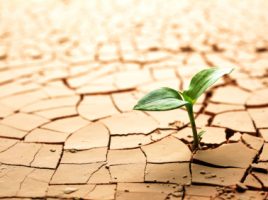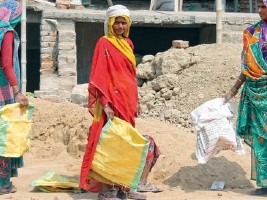The Need for Novel Forms of Learning to Plan for Resilient Water Systems in Human Settlements1

Community in discussion
The resilience of any social-ecological -technological system (SETS) in the Anthropocene is defined as the capability to navigate uncertainties and manage changes. At the same time, approaches to building resilience must also influence the direction of change towards greener, more inclusive, and just pathways of development to achieve the goals of sustainable development. Resilient systems, therefore, need flexible internal structures that can adapt or transform to deliver desired outcomes in response to changing circumstances. In addition, they have the capability and agency to redirect the course of socio-economic development interventions by inducing strategic shifts in policies and programmes. This requires capacities for adaptive management and adaptive governance, and mechanisms that enable continued societal and institutional learning critical to ensure such adaptive capacities. .
Local and regional water commons within human settlements are SETS with all the characteristics of complexity, interdependence, connectivity, self-organisation, and adaptive learning potential. They are subject to dynamic pressures from external (such as climate change) and internal (such as population and pollution) sources. These pressures can drive the water system to change its form, availability, accessibility, and ability to deliver ecosystem services; gradually losing resilience and suddenly tipping over into a degraded state and becoming incapable of responding to the requirements of human settlements.
Learning mechanisms within governance and management systems capture information and feedback from the socio-economic and ecological spheres, including potential political and technological disruptions. This helps in informing policy design, planning, and implementation in a regular, timely, and systematic manner. Such mechanisms are conspicuously missing in the local governance of water systems in India. Most Monitoring and Evaluation (M&E) systems used by municipalities and panchayats in India are merely trackers designed to track the inputs and achievement of defined outputs. Very few conduct the analysis to evaluate drivers and barriers to achieve the desired sustainability outcomes, and rarely do M&E systems bridge with ‘Learning (L)’ to support planning and plan implementation, course correction, and, importantly, system transformation in real-time and in an inclusive manner. Through readings, case studies, and conversations with experts working on local and sub-national governance issues in the area of water systems resilience, some areas of consideration emerge:
- In the context of human settlements, three interconnected and nested levels of resilience of SETS are recognised: (a) socio-economic dealt at the local level through local engineering and infrastructure solutions, (b) the sub-regional, intermediate hazard resilience where uncertainty and extreme events are in focus, and (c) the regional socio-ecological where trajectories of change are slow but often irreversible. M&E systems need to draw upon the impact of this interconnectedness to enable learning. This means data from different spatial scales is required to build a comprehensive understanding.
- Feedback loops and time lags in the feedback across the relationships between elements of SETS, influence the outcome behaviours of the system. M&E systems, therefore, need to track trends dynamically and draw attention to potential future shifts based on what has already transpired. This points to a robust longitudinal data framework for system analysis.
- To understand and respond to the resilience of local and regional water commons comprehensively, M, E and L mechanisms will need to take in diverse forms of knowledge captured from different sources from a wide range of stakeholders. Both quantitative and qualitative data regarding ecological, social, and economic indicators will need to be juxtaposed. Data will come in different forms and sources, such as from monitoring equipment that tracks water quality and quantity, human health data from local medical establishments, spatial, heat, and water data from satellite and meteorological sources, observed seasonal shifts in ecological patterns by citizen scientists, and social behaviours through surveys or memes on social media expressing societal concerns or children’s art, etc
- ‘Early warning signals can sometimes indicate that a system is losing resilience’ (global tipping points report, December 2023)2. It is important that signals regarding ecological distress or social indifference are captured and taken into cognisance early on for course correction. Smart systems can pick up indicators such as clogged drains needing de-siltation and technical breakdowns in wastewater treatment systems. Other indicators, such as visible waste dumping and foul smells, encroachment, and barricading of waterbodies, are easily picked up by vigilant citizens. Citizen scientists such as school students can be additionally equipped to capture water quality, water quantity, local biodiversity, and pollution data locally. They can also conduct ground verification of satellite data regarding the typology of green cover, the extent of water body degradation, groundwater levels, micro heat islands, etc. These possibilities point to expanding the domain of data collection and innovative ways of bringing data from different sources, in different formats and from different knowledge systems to be juxtaposed for analysis in a rapid response approach.
- To act on sustainability challenges of the Anthropocene, M&E mechanisms must influence external drivers of change, that is, influence policy and market shifts, consumption behaviours, and value basis. Therefore, besides having a strong factual footing based on credible evidence and a capacity for scenario building, an adaptive local and regional water commons system also needs to have the ability to track and grab potential policy, technology, and societal windows of opportunity. This includes an ability to communicate and share lessons and an ability to envision and create imageries of possible sustainable futures.
All of the above indicate that M&E systems must be designed for Learning – ‘L’ at the individual, societal, and institutional levels. While individual learning is driven largely by the education system and self-motivation, societal and institutional learning must be driven through deliberately designed mechanisms in local governance. These mechanisms include mandated spaces and opportunities for multi-stakeholder interactions, citizen participation in data collection and assessments of their local water commons, integration of diverse knowledge systems and ways of knowing, and finally, communication and sharing of socio-ecological and economic learning regarding the local and regional water commons to all concerned stakeholders.
Notes
- This editorial is built upon learning from (i) ongoing research on the reciprocal relationship between social and institutional learning systems and nature-based solutions to enhance the resilience of urban water systems in India and (ii) the current body of work on water body rejuvenation led by Development Alternatives.
- Details available at https://global-tipping-points.org/section1/1-earth-system-tipping-points
The views expressed in the article are those of the authors and not necessarily those of Development Alternatives.
This blog first appeared as an editorial in Development Alternatives Newsletter March, 2024 https://devalt.org/newsletter/42






Leave a Reply